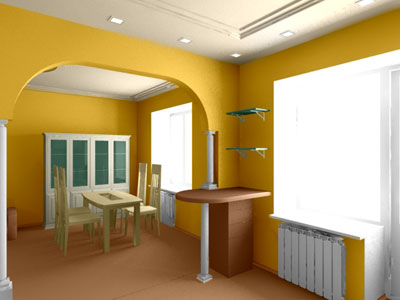Post-disaster Design Services for Myanmar
Advertising
E-mail this article
Print this article
Subscribe to RESIDENTIAL ARCHITECT
Subscribe to subscribe to the Newsletter
Other articles from the headlines section
* Online service offers free green house plans
* MAK Center won the third Schindler House
* The first Buckminster Fuller said Price Challenge
* The new architecture and design head Released
* Eameses celebrated on stamps
Source: living architect on-line
Date: 21 May 2008
By Stephani L. Miller
On 2 May and 3, 2008, Cyclone Nargis roztrhaný across the southern part of the Union of Myanmar (also known as Burma) in Southeast Asia, destroying 95 percent of buildings, killing an estimated 127990 people and displacing more than 2 million people, according to the American Red Cross . In a few days later, the nonprofit Architecture for Humanity activated fundraising efforts to promote volunteer architects, engineers and other experts in the construction industry in-country as reconstruction begins.
In 24 hours, San Francisco-based organization had raised $ 10000, 48 hours after the collection started, the total doubled. "That tells you what is the design community can do when you together," says co-founder and executive director Kate Stohr.
As a follow-up to 12 May 2008, 7.9 earthquake leveled that a large part of the Chinese provinces of Sichuan, the organization calls for architects to help after the construction information, links to such information, and earthquake-resistant design strategies to its open architecture network to support the building of architects and experts on the ground China, the rehabilitation and reconstruction efforts. Post-disaster, these experts often work without immediate access to design libraries and technical resources that most architects working in the office available.
If the local professional resources are insufficient, Architecture for Humanity-supported teams to develop low-cost housing and more community-scale solutions that are regionally and contextually appropriate for the area in crisis-such as destroyed, hurricanes, tsunamis, earthquakes or a grant engineering support for organizations working on reconstruction of communities. In the post-disaster situation in Myanmar, "our main objectives would be to provide architecture and design services in the ways they're most needed," said Stohr.
This means that schools, community rooms, hospitals and civic buildings, which will serve those who need it sectors of society are the first projects targeted. "This is the meat and potatoes of what enables the community to work," he says. "They often can not even begin to do large-scale housing works until you have the community room for meetings and effective delivery of services."
Architecture for Humanity began mobilization project teams, which will be paid their design services and expertise to Myanmar on the rebuilding effort. The body will then reach out to other relief organizations to offer in-country partnerships.
Stohr expects that the organisation of work in Myanmar will be far more complex than previous attempts because the country has concluded the government doors to foreign aid of all, but also other Asian countries.
Architecture for Humanity continue to raise funds to support efforts in Myanmar. Ideally, Stohr said its leadership would like to achieve the same level of involvement is controlled by the post-Katrina efforts, not only to promote professional designers, but the financing of construction work as well. This allows the organization to monitor the work and ensure that structures are built under the project.
The widespread destruction of houses and other buildings in Myanmar from the cyclone and the absolute devastation wrought by the earthquake and aftershocks in China may serve as a wake-are prompted to those governments and others around the world, that buildings should be constructed so as to better deal with extreme weather and geological events.
One way, the average architects can help them resolve their housing for the storm, flood, earthquake zones and the open architecture network (www.openarchitecturenetwork.org), which is available for those who work on projects of reconstruction in disaster areas around the the world.
For more information on donations or volunteers, visit www.architectureforhumanity.org.
skip to main |skip to sidebar





























Blog Archive
- October (3)
- July (1)
- June (467)
- May (201)
- April (119)
- March (136)
- February (9)
- January (12)
- December (15)
- November (4)
- October (12)
- September (81)
- August (30)
- July (13)
- June (32)
- May (54)
- April (47)
- March (63)
- February (87)
- January (242)
- December (120)
- November (20)
- October (35)
- September (24)
- August (11)
- June (30)
- May (15)
- March (12)
- February (9)
- January (6)
- December (17)
- November (11)
- October (7)
- September (6)
- August (2)
- July (12)
- June (26)
- May (18)

